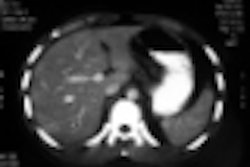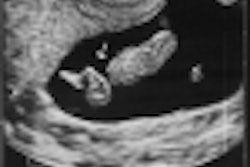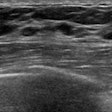(Ultrasound Review) Obstetricians at the University of Zagreb preoperatively evaluated pelvic tumors using Doppler and three-dimensional (3-D) sonography. They determined that a combination of morphologic and vascular imaging improved assessment and their findings were published in Journal of Ultrasound in Medicine.
The five methods used to diagnose adnexal and endometrial malignancies included transvaginal (TV) grayscale, TV color Doppler, 3-D grayscale, 3-D power Doppler and contrast-enhanced 3-D power Doppler. An assessment of the following ultrasound characteristics was made -- adnexal and endometrial morphology, thickness, and volume by 2- and 3-D ultrasound. Blood flow also was evaluated using TV color and pulsed Doppler and 3-D power Doppler.
Two hundred and fifty-one patients with adnexal masses and 41 patients with endometrial lesions were studied. A subset of eighty-nine patients with complex adnexal masses also were examined using contrast-enhanced 3-D power Doppler.
Accurate differentiation of endometrial hyperplasia and malignancy has proven difficult, but according to the authors, an endometrial thickness of <4mm reliably excludes pathology. "Differentiation between pathologic findings such as endometrial hyperplasia and cancer is not possible because of an overlap in the endometrial thickness measurements. An ovarian volume of 20cm3 or greater in premenopausal women or 10cm3 or greater in postmenopausal women was considered abnormal," the authors stated.
A high risk for ovarian cancer also was associated with the following adnexal mass characteristics -- thick wall septa, solid components >1cm, heterogeneous, and or increased echogenicity and tumoral resistive index of 0.42 or less. Further adnexal mass characteristics available from 3-D and power Doppler included -- disturbed relationship with surrounding structures, disorganized vessel architecture, and complex vessel branching. Malignancy risk was assessed using a scoring system for these criteria. In evaluating endometrial malignancy, the criteria used were endometrial volume >13cm3, disturbed subendometrial halo, intracavitary fluid, disorganized vessel architecture, and complex vessel branching.
In the detection of adnexal malignancy, 2-D transvaginal ultrasound with color Doppler showed a sensitivity of 89% and a specificity of 98% compared with a sensitivity of 97% and specificity of 99% for 3-D power Doppler. Further improvement in sensitivity (100%) and specificity (99%) was demonstrated with contrast-enhanced 3-D power Doppler. The authors concluded that the improvements in surgical decision making and clinical management afforded by the use of 3-D and power Doppler justified utilization in the diagnosis of suspected gynecologic malignancies.
"Preoperative evaluation of pelvic tumors by Doppler and three-dimensional sonography"Asim Kurjak et al
Dept of Obstetrics and Gynecology, Medical School, University of Zagreb, Sveti Duh Hospital, Sveti Duh 64, 10000 Zagreb, Croatia
J Ultrasound Medicine 2001(August); 20:829-840
By Ultrasound Review
November 6, 2001
Copyright © 2001 AuntMinnie.com



















